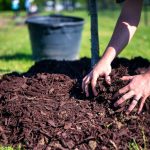How to grow and care for your leeks
Leeks are a hardy biennial plant mostly grown as an annual. They belong to the same family as onions. They are thick white stems having a slight onion flavor. They are used as cooked vegetables and taste delicious in soup. Leeks need a warm to cool climate and can tolerate a wide range of soils.
Below are simple steps you can follow to grow your leeks.
Nursery
Prepare a nursery by digging deeply at least 15cm, the nursery should be I m wide. Spread a wheelbarrow of compost or farmyard manure on the soil and dig it in. Raise the nursery bed 15 – 20 cm high from the ground. Make thin lines at a spacing of 15cm apart. Make furrow and spread the leek seeds thinly along the lines cover lightly. After this cover with mulch and shade lightly. Leeks can also be raised in seed propagation trays
Transplanting
Prepare your land early and work compost into the soil. Lift seedlings from the nursery when half as thick as a pencil or after 6 weeks. Planting holes15cm deep and 3cm wide should be made. Use a spacing of 35cm between rows and 20cm between plants. The seedlings should be dropped into the holes. Do not fill the holes with earth; just pour a little water into each hole. This space will fill up with loose soil which will allow the plant to grow.
Management of leeks
Leeks require soils that are rich and well-drained. Incorporate the soil with organic matter like compost or farmyard manure. After transplanting add mulch around the plant to retain moisture and minimize weeds. Add a phosphate fertilizer before or when transplanting and top dress with a nitrogenous fertilizer 3- 4 weeks later.
Ensure regular watering to keep the soil moist and avoid too much soggy soil as it may accelerate fungal problems. Pests and diseases in leeks are rarely serious. Careful choice of varieties that are disease resistant and have good production practices help keep disease and pests at bay.
Onions thrips and onions maggots are common pests. Thrips cause leaf silvering and die back. The common disease includes powdery mildew and purple blotch. These fungal diseases occur during damp weather conditions.
Harvesting
Harvest your leeks when the shoots are about 4cm in diameter and 25-30cm long. The leaves should be brightly colored and crisp. Before dispatch to the market trim and wash the leaves and roots. The crop matures in 4- 5 months, they can be left in the ground for some months until they are required.
Leeks are easy to grow, and they require sufficient water, sunlight, and nutrients to effectively give you a good harvest. They are nutritious and have a host of health benefits. We have grown them on our farm and they have given us wonderful results. Share with us your experience with this crop on your farm.
2,681 total views, 2 views today




Leave a Reply
Want to join the discussion?Feel free to contribute!